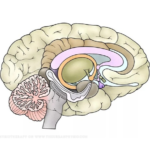Cognitive Behavioral Therapy (CBT) is a powerful and evidence-based approach for addressing a range of mental health issues, including anxiety, depression, stress, and more. While CBT is traditionally done with the guidance of a therapist, many CBT techniques are simple enough to practice on your own at home. These techniques can help you identify and change unhelpful thought patterns, build resilience, and develop healthier responses to everyday challenges.
In this blog, we’ll explore the basics of CBT, its benefits, and practical techniques you can incorporate into your daily routine to improve your mental well-being.
What is Cognitive Behavioral Therapy (CBT)?
Cognitive Behavioral Therapy is based on the idea that our thoughts, feelings, and behaviors are interconnected. Negative thoughts can lead to negative emotions, which, in turn, can cause unhelpful behaviors. By identifying and challenging these negative thought patterns, CBT aims to create positive changes in emotions and behaviors.
CBT is a structured, goal-oriented therapy that typically focuses on the present rather than delving deeply into past experiences. It encourages a practical approach to solving problems by developing skills for managing life’s challenges more effectively.
Benefits of Practicing CBT Techniques at Home
Practicing CBT techniques on your own can help you build:
Increased Self-Awareness: Recognizing and understanding your thought patterns.
Better Emotional Regulation: Managing emotions effectively and reducing stress.
Improved Problem-Solving: Approaching challenges with a clear, solution-focused mindset.
Greater Resilience: Learning to bounce back from setbacks and adapt to changes.
Let’s dive into some practical CBT techniques you can use daily to enhance mental health and improve your overall quality of life.
1. Thought Records
One of the central components of CBT is identifying negative thought patterns that lead to negative emotions. Thought records are a helpful tool for tracking these thoughts and identifying patterns that may contribute to stress or anxiety.
How to Use: Write down situations that trigger strong emotional reactions. Next, write down the automatic thoughts that came to mind, the emotions you felt, and the intensity of each emotion. Finally, challenge these thoughts by asking yourself if they’re accurate or if there’s another perspective you can consider.
Benefits: Thought records help you catch unhelpful thought patterns early, providing insight into your emotional responses and helping you reframe negative thoughts.
2. Cognitive Restructuring
Cognitive restructuring is about challenging and changing negative thinking patterns. By questioning the validity of your negative thoughts, you can reduce their impact and replace them with more balanced and positive alternatives.
How to Use: When you notice a negative thought, ask yourself questions like, “Is this thought based on facts, or is it just a feeling?” and “Is there a different way to interpret this situation?” Try to reframe the thought in a way that’s more realistic or positive.
Benefits: Cognitive restructuring helps shift negative thought patterns, reducing anxiety, and building a more positive mindset.
3. Behavioral Activation
Behavioral activation is a CBT technique that involves engaging in activities that can improve your mood. It’s especially helpful for managing symptoms of depression by encouraging positive actions, even when motivation is low.
How to Use: Make a list of activities that you enjoy or that give you a sense of accomplishment (e.g., going for a walk, calling a friend, doing a hobby). Set small, achievable goals and gradually work these activities into your routine, even if you don’t initially feel like it.
Benefits: Engaging in positive activities can increase feelings of happiness, accomplishment, and connection, helping to lift your mood.
4. Exposure Therapy (In a Gradual, Self-Guided Way)
Exposure therapy is commonly used for managing anxiety and phobias. It involves gradually facing situations or things that trigger fear, helping to reduce anxiety over time through repeated exposure.
How to Use: Start by listing situations that make you anxious, ranking them from least to most anxiety-provoking. Gradually expose yourself to these situations, starting with the least challenging one, and only moving to the next when you feel comfortable.
Benefits: Exposure therapy builds tolerance to anxiety triggers, empowering you to face fears and reducing avoidance behaviors.
5. Mindfulness-Based Cognitive Therapy (MBCT)
Mindfulness-Based Cognitive Therapy combines traditional CBT with mindfulness practices. Mindfulness encourages you to stay present and observe your thoughts and feelings without judgment, which can help reduce negative thought patterns.
How to Use: Try practicing mindfulness meditation for 5–10 minutes each day. Focus on your breathing and gently bring your attention back whenever your mind wanders. You can also practice mindfulness by paying attention to sensations in your body, like how your feet feel on the ground or how your food tastes as you eat.
Benefits: Mindfulness helps reduce stress, increase self-awareness, and enhance emotional regulation by preventing over-identification with negative thoughts.
6. Activity Scheduling and Prioritizing
CBT often uses structured scheduling to help people prioritize their activities, which can help reduce overwhelm and improve time management. By scheduling enjoyable activities and tasks that align with your goals, you create a balanced routine that promotes well-being.
How to Use: Make a list of tasks or activities you’d like to accomplish each day. Start with manageable goals and break larger tasks into smaller steps. Remember to include self-care and relaxation activities.
Benefits: Scheduling improves motivation, reduces procrastination, and builds a sense of accomplishment, promoting a positive mental outlook.
7. Gratitude Journaling
Gratitude journaling is an effective way to focus on positive aspects of life, helping you shift your attention away from negativity. By regularly recording things you’re grateful for, you can improve mood and foster a positive mindset.
How to Use: Write down three things you’re grateful for each day, no matter how small. Try to be specific, focusing on details that made you feel happy or appreciative.
Benefits: Gratitude journaling increases positive emotions, reduces stress, and helps build resilience by promoting a more optimistic outlook.
8. Self-Compassion Practice
Self-compassion is about treating yourself with kindness and understanding, especially during difficult times. Self-compassion practice can help reduce self-criticism, build resilience, and improve emotional well-being.
How to Use: When you’re feeling down, remind yourself that everyone struggles, and be kind to yourself instead of being overly critical. Try saying something like, “It’s okay to feel this way, and I’m doing my best.”
Benefits: Self-compassion improves self-esteem, reduces negative self-talk, and helps build resilience by promoting a gentle, supportive attitude toward oneself.
The Bottom Line
CBT techniques are highly effective for improving mental health, and many of them can be practiced at home. By incorporating thought records, cognitive restructuring, mindfulness, and other techniques into your daily routine, you can develop a more resilient mindset, reduce anxiety, and enhance your overall well-being.
Remember, while self-guided CBT can be very helpful, professional guidance is essential for serious mental health challenges. Practicing these techniques regularly will help you build mental strength and foster a positive, healthy outlook on life. Start with one or two techniques, and gradually expand as you become more comfortable with them. Resilience and mental well-being are skills that grow with consistent effort and self-compassion.





